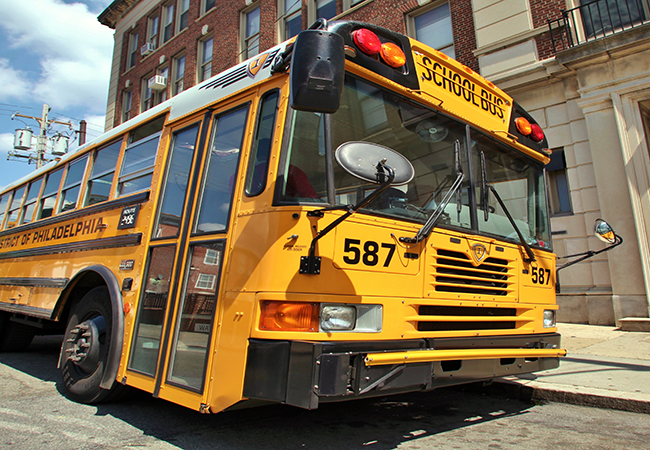The Educator's Playbook
Reimagining leadership in your school
August 19, 2016
John DeFlaminis developed a Distributed Leadership Program that creates leadership teams that leverage how influence actually works in schools, and channels that reality to transform schools.
Who actually leads in a school? Traditionally, the answer has been the people with titles and offices. Principals and superintendents do wield formal power, but research tells us that many people actually influence the core work of successful schools.
Penn GSE’s John DeFlaminis has spent his career understanding leadership in schools. He developed a Distributed Leadership Program that creates leadership teams that leverage how influence actually works in schools, and channels that reality to transform schools.
Distributed Leadership in Schools, co-written by DeFlaminis, is a guide for educators implementing a distributed leadership program. Here are a few ideas on how distributed leadership might work in your school:
Distributed Leadership in Schools, co-written by DeFlaminis, is a guide for educators implementing a distributed leadership program. Here are a few ideas on how distributed leadership might work in your school:
Who’s Actually Leading?
A simple exercise can reveal opportunities for more effective coordination and collaboration.
First make a chart. On one side, place “formal leaders.” These are people with assigned authority, like a principal. On the other side, place “informal leaders.” These are teachers or staff without formal leadership designation who carry influence.
Now ask yourself: Who in your school works to help the community identify shared goals? Under each category on your chart, list individuals and the actions they take to exert influence, either directly or indirectly.
First make a chart. On one side, place “formal leaders.” These are people with assigned authority, like a principal. On the other side, place “informal leaders.” These are teachers or staff without formal leadership designation who carry influence.
Now ask yourself: Who in your school works to help the community identify shared goals? Under each category on your chart, list individuals and the actions they take to exert influence, either directly or indirectly.
Developing People
Take the chart and ask yourself: Who in your school influences the knowledge and skills of others, supporting their continual learning and development?
Redesigning the Organization
Again, start with the same chart. This time ask: Who in your school helps establish routines or structures that facilitate effective teaching and learning (meetings, protocols, common practices, etc.)?
Building a structure
This is one of the first exercises we use to help schools think about the distributed leadership program. Getting from a traditional power structure to real team-based leadership takes deliberate planning and follow through.
It can be easy to toss out platitudes like “everyone leads.” But purposely building mechanisms for distributing leadership is much harder. When schools implement a distributed leadership program, they need to focus on the training and support structures for educators. Schools should form leadership teams, comprised of school administrators and nominated teacher leaders. These teams take part in intensive training and professional development, with coaching and strategic planning.
It can be easy to toss out platitudes like “everyone leads.” But purposely building mechanisms for distributing leadership is much harder. When schools implement a distributed leadership program, they need to focus on the training and support structures for educators. Schools should form leadership teams, comprised of school administrators and nominated teacher leaders. These teams take part in intensive training and professional development, with coaching and strategic planning.
When it works
Strong distributed leadership teams share characteristics. They’re defined by norms of trust and collaboration. Teacher leaders play strong roles in leading conversations, particularly about instruction. Administrators respect teacher voice, and abide by shared decision-making structures, creating space for teacher leaders to influence the leadership practice of the school. When decision making is shared, the decisions any one person has to make are on questions where they have the most expertise.


